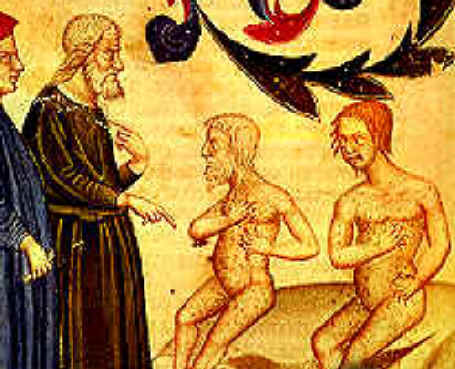|
Marchione di Coppo Stefani, The
Florentine Chronicle, written in 1370’s In the year
of the Lord 1348 there was a very great pestilence in the city of Florence. The symptoms
were the following: a bubo in the groin, where the thighs meet the trunk; or a small
swelling under the armpit; sudden fever; spitting blood and saliva (and no one who split
blood survived it.) It was such a frightful thing that when it got into a house, as was
said, no one remained. |
